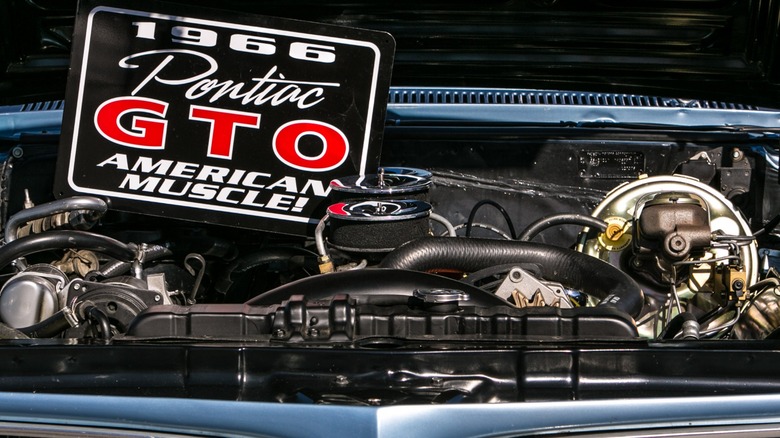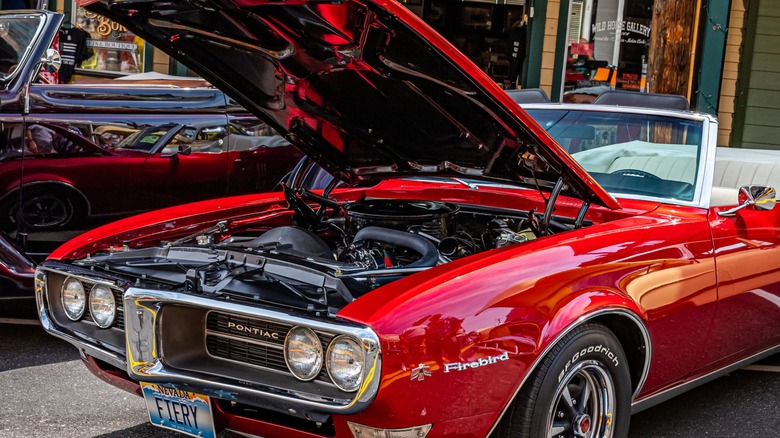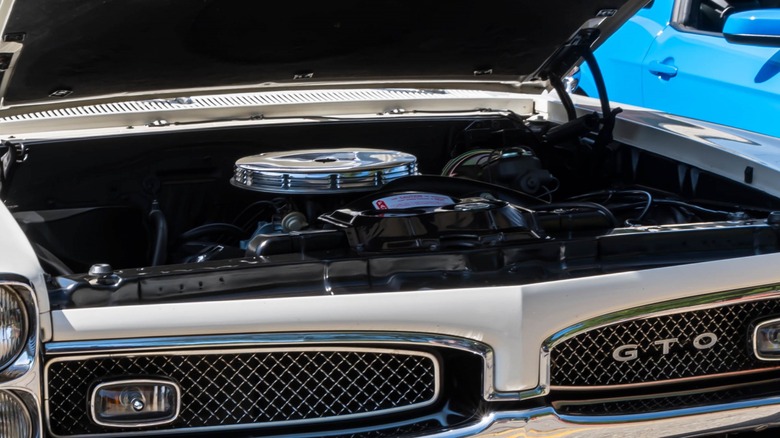The Big Block Engine Myth: What Even Hardcore Pontiac Fans Often Get Wrong
When it comes to classic American muscle cars, you'll hear the terms "small block" and "big block" thrown around quite a bit. As one might assume, it's in reference to the actual physical size of V8 engines from various manufacturers. Small-block Ford, big-block Chevy, Mopar big-block, etc, are common nomenclature because all of these manufacturers had multiple engine casts. One big and one small with varying bore and stroke sizes to generate a host of different engine offerings and power levels. However, there is one instance in which the term "big block" getting thrown around is not actually correct: Pontiac V8 engines.
There's no shortage of historic V8-powered Pontiac vehicles. The GTO, Ventura, Bonneville, and, of course, the Trans Am come to mind. That being said, despite Pontiac offering a myriad of V8 engines throughout the company's run, Pontiac never once produced a big block V8. Let's take a brief look at the history of Pontiac V8s for a better understanding.
Pontiac V8 engines all share the same block
The basic platform that went on to power the above-listed Pontiac legends came to be in 1955 when the company developed its first overhead-valve V8 engine. With its initial displacement of 287 cubic inches, the V8 made 173 horsepower. From there, Pontiac continued to push the envelope with the platform, continuously boring and stroking to generate massive displacement and power.
One of the most notable events to come from the continuous development of this platform was in 1964. Despite Pontiac's decision to ban corporate racing involvement and general disinterest in producing performance cars, John DeLorean chose to sneakily slam a 389 cubic-inch variant of the Pontiac V8 in the Tempest and offered it as an option that would go on to become one of the most iconic cars in American history: the GTO.
Pontiac engineers continued to bore and stroke this engine to their heart's content, with displacement reaching as high as 455 cubic inches. Power output from the factory reached nearly 400 horsepower. However, across the board, all of the engines used the same basic engine block. There is no Pontiac big block because there is no small block, either. There is simply the Pontiac V8 engine block, which makes their interchangeability between models and chassis a hot rodder's dream come true.
Why do people call them big blocks?
Boring and stroking an engine to nearly 200 extra cubic inches in comparison to its original form is not all that commonplace. So, it's easy to see how folks would assume that the bigger displacement variants had to have come from a bigger engine block. Compared to other manufacturers, it makes sense to operate under the assumption.
For example, big-block Ford and Chevrolet engines like the Ford 460 and Chevy 427 are indeed built on big-block platforms. It was almost the industry standard at the time to have two different-sized V8 platforms. So, it's easy to see how folks associate any V8 engine with a displacement over 400 cubic inches with the phrase "big block."
Likely, the nomenclature being associated with other manufacturers simply led to the inclusion of Pontiac in the naming scheme. It is, however, incorrect. So, next time someone brings up a Firebird or GTO with a "big block" 455 engine, you can inform them there is no such thing.


